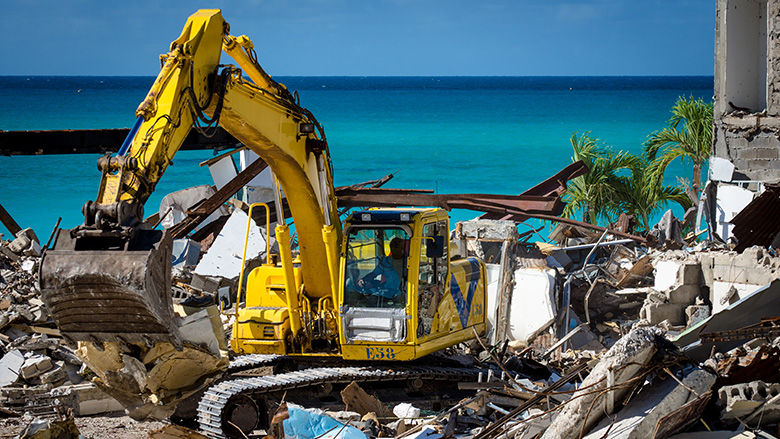Sint Maarten is a constituent country of the Kingdom of the Netherlands, located in the Caribbean. It occupies the southern half of an island shared with the French overseas collectivity of Saint Martin. Covering 34 square kilometers, Sint Maarten had an estimated population of over 43,350 in 2024, making it one of the most densely populated countries in the Caribbean. Population growth has been steady over recent decades, driven by economic development and migration, although official estimates vary due to registration challenges and migration flows.
Sint Maarten is highly vulnerable to natural disasters due to its location in the Atlantic hurricane belt. The country faces repeated exposure to high winds, heavy rainfall, flooding, and earthquakes. Coastal areas are also at risk from sea level rise, storm surges, and potential tsunamis. Increased urbanization, climate change, and limited resilience capacity further exacerbate these risks.
Over the past six decades, Sint Maarten has experienced multiple major hurricanes. Hurricanes Irma and Maria in September 2017 were particularly devastating, causing damages estimated at US$1.38 billion and losses of US$1.35 billion—roughly 129% and 126% of GDP, respectively. About 90% of infrastructure and large portions of the natural environment were affected, leading to a cumulative GDP contraction of 12.5% during 2017–2018. The 2024 Atlantic hurricane season was exceptionally active, with 18 named storms—including 11 hurricanes and 5 major hurricanes. Hurricane Beryl became the earliest recorded Category 5 hurricane, causing severe damage across the Caribbean. The 2025 season is also forecasted to be above normal, influenced by ENSO-neutral conditions, warmer ocean temperatures, weak wind shear, and the West African Monsoon.
Sint Maarten’s economy is highly tourism-dependent, which is the primary driver of growth and employment. Restaurants, hotels, and other tourism-related sectors account for approximately 45% of GDP, while tourism generates roughly 73% of foreign exchange earnings and employs about one-third of the workforce. Cruise tourism dominates, with the only deep-water port located in Philipsburg, and around 80% of visitors are short-stay cruise passengers. The airport serves as a major regional hub, supporting both stay-over and transit tourists.
The country has been recovering from profound economic shocks caused by Hurricanes Irma and Maria in 2017, compounded by the COVID‑19 pandemic. GDP contracted sharply during 2017–2018 (–12.5%) and again in 2020 (–18%), but rebounded by 8.2% in 2021 and an estimated 5.8% in 2022. In 2023, real GDP growth was around 3.5%, and in 2024, Sint Maarten’s GDP (current US$) reached US$1.74 billion, with a per capita GDP of approximately US$38,700. (World Bank, 2024)
Reconstruction of infrastructure, rising domestic demand, and the revival of tourism have driven the recovery. GDP is projected to reach pre‑pandemic and pre‑hurricane levels by 2025, supported by continued growth in cruise tourism and the reconstruction of Princess Juliana International Airport, which is expected to strengthen stay‑over tourism and enable expansion of homeporting.
Last Updated: Oct 16, 2025

